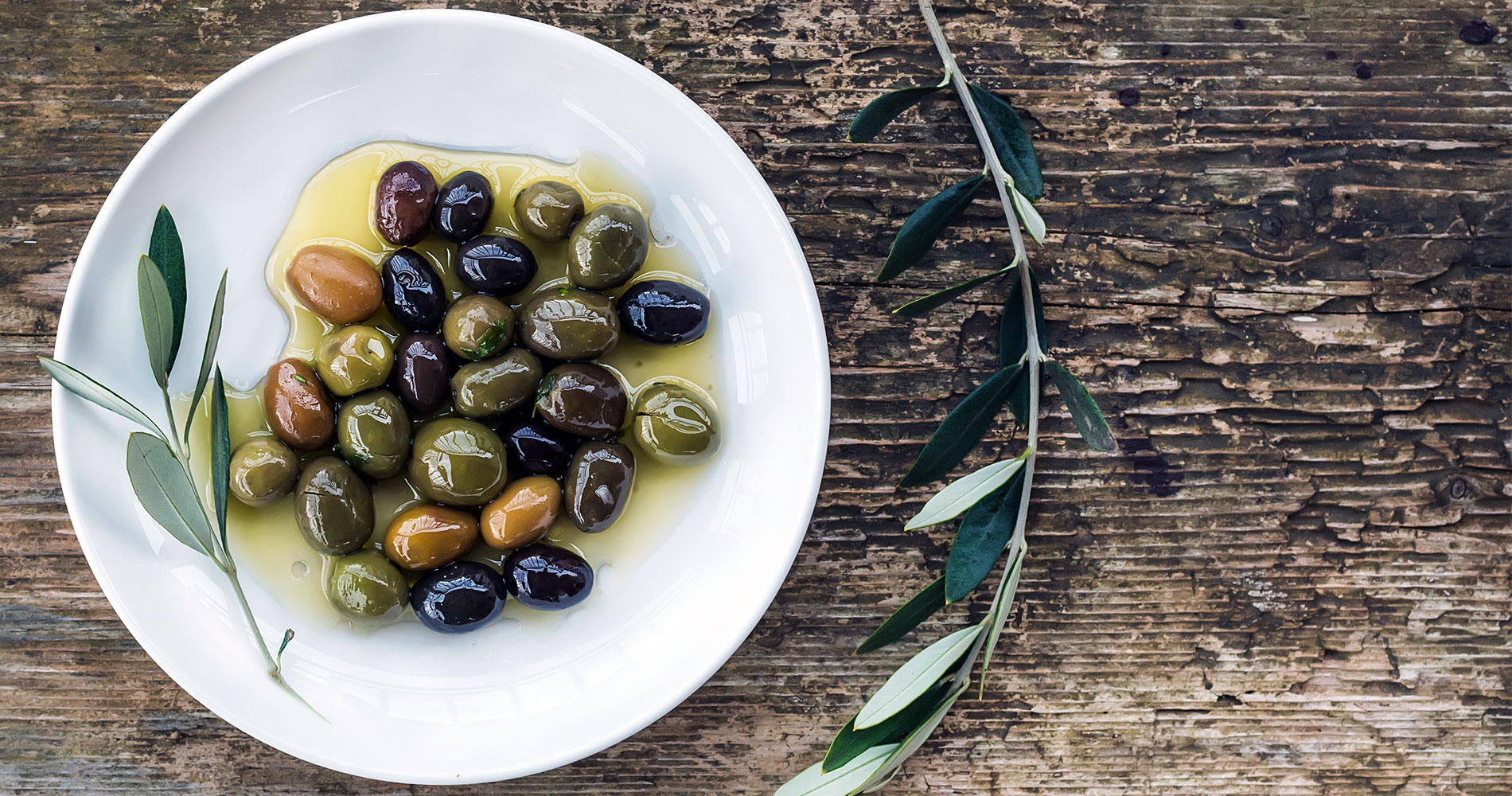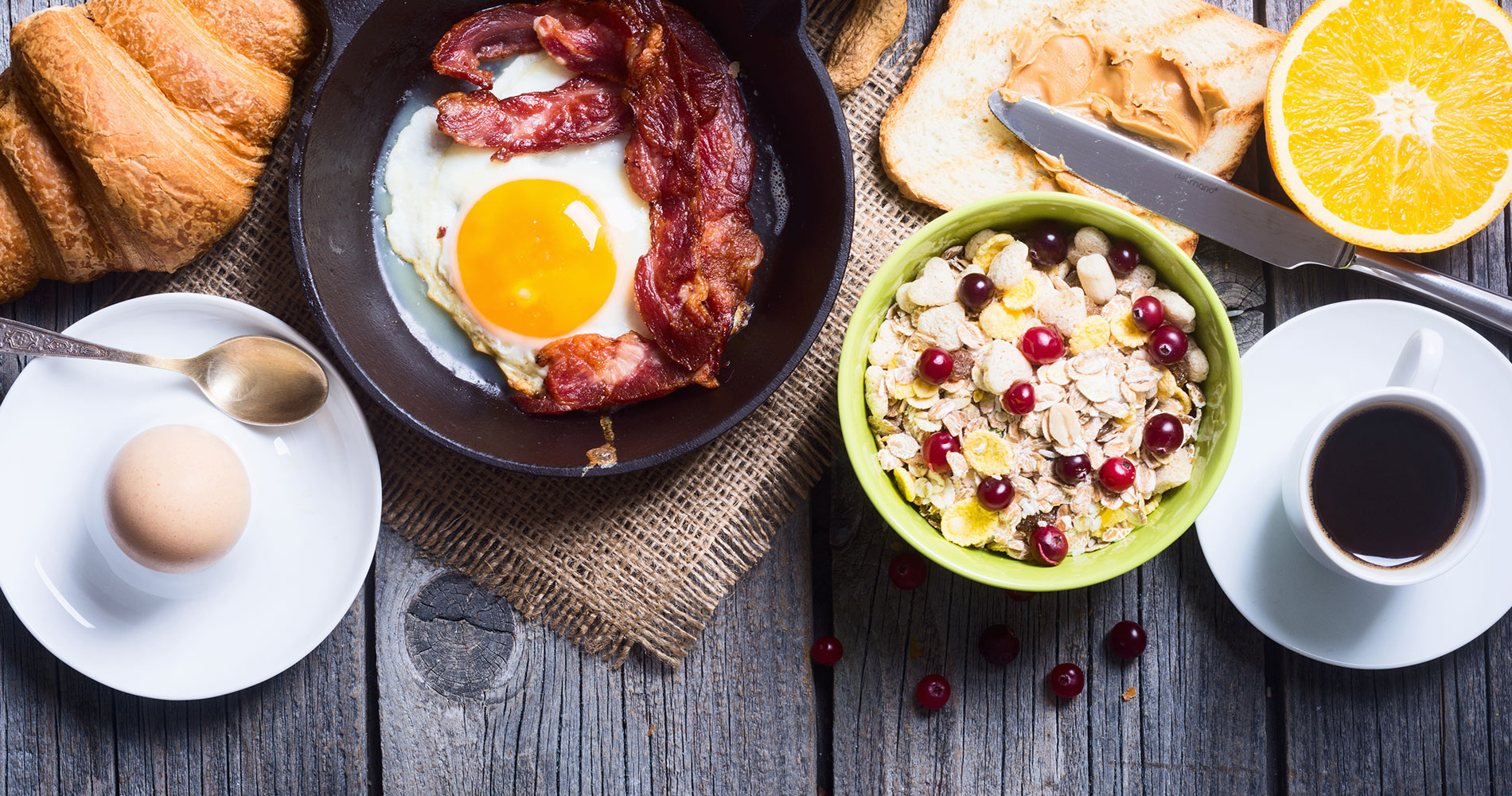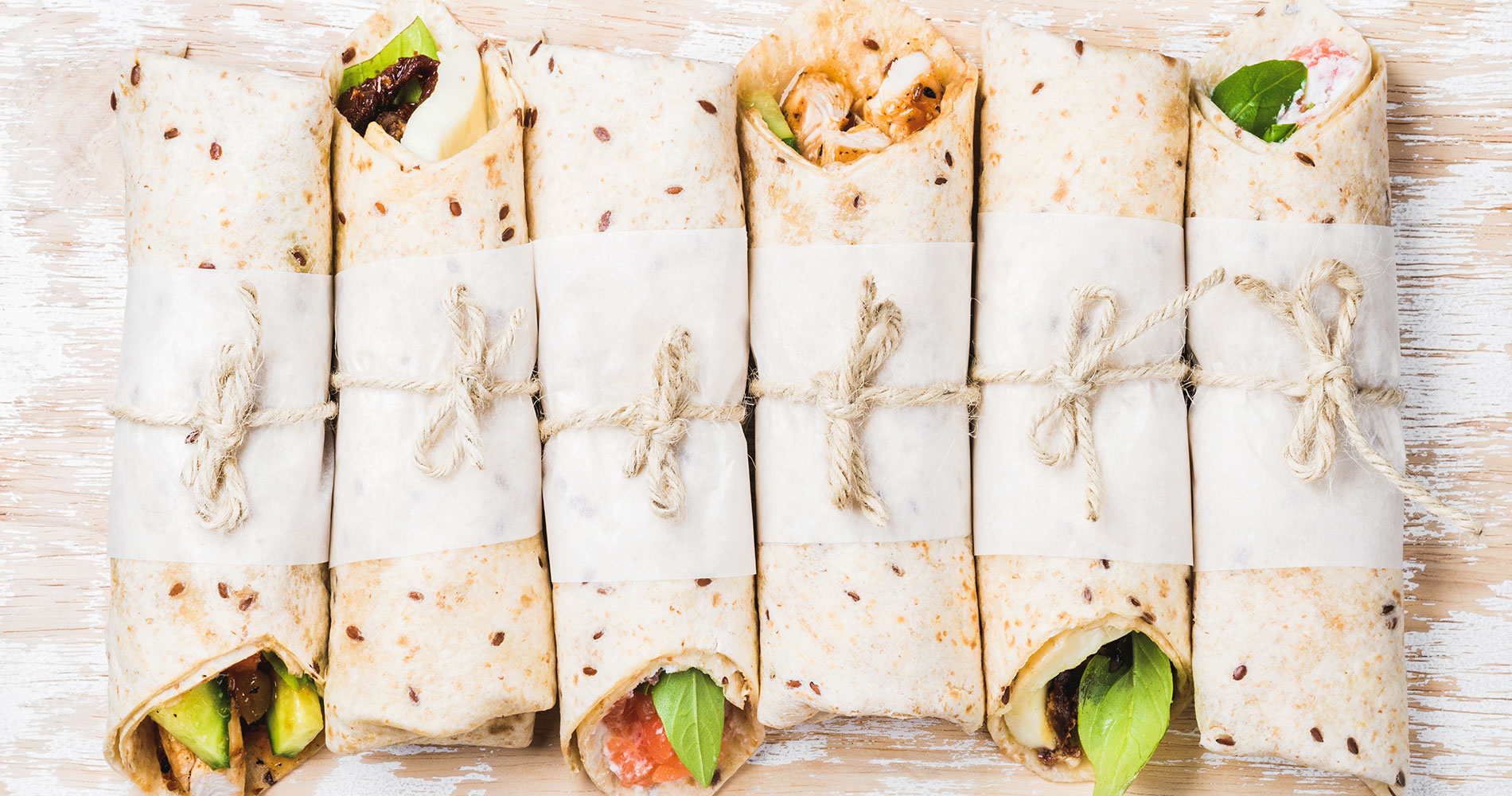How to Get Your Kids to Eat Right
If you’re a parent, it’s likely you have some picky eaters on your hands. Our Registered Dietician, Debbie James, gives you the scoop on healthy eating for your kids and teens.


Which foods assist with loosing back fat? I have a flat stomach but can’t get rid of my back roll/fat.
– Queen

Your question resonates with so many others. Usually carrying extra body fat results in generalized fat deposition. Fat accumulation on the back (posterior torso adipose tissue) is quite common (and may be inherited), and could be a result of yo-yo dieting or age.
Despite numerous products and advertisements, there is no way to target fat loss in that area alone. There is no evidence to support a particular diet or foods for reducing a roll of fat on the back. Spot reduction from exercises does not work either.
The good news: amping up your cardio and cleaning up your diet will help you get the results you want as your overall body fat composition improves!
Some serious basics for your fat-melting meal planning include:
– Debbie J., MS, RD
This article should not replace any exercise program or restrictions, any dietary supplements or restrictions, or any other medical recommendations from your primary care physician. Before starting any exercise program or diet, make sure it is approved by your doctor.
Some questions have been edited for length and/or clarity.
 Have a nutrition question? Our registered dietitian is ready to help!
Have a nutrition question? Our registered dietitian is ready to help!
Email nutrition@lafitness.com or submit your question below and it may be featured in an upcoming article!
If you’re a parent, it’s likely you have some picky eaters on your hands. Our Registered Dietician, Debbie James, gives you the scoop on healthy eating for your kids and teens.
Debbie James, RDN, helps answer a reader’s question on breakfast and working out.
Debbie James, RDN, helps answer a reader’s question on introducing teens to better nutrition.


I’ve been doing some research and came across the Mediterranean diet as a great way to maintain a healthy weight as well as gaining many lifelong health benefits from the foods/ingredients it’s centered on. Are you familiar with the Mediterranean diet and if so any pointers for transitioning from one diet to a different diet?
– Shelby G.

The key specifics of a Mediterranean style diet depend on who you ask, since it is truly a reflection of a regional dietary pattern, not from one particular person, author or company.
Bordering the Mediterranean Sea are Southern Europe, Western Asia and Northern Africa. Dietary patterns from countries of the latter two started to be referred to as a “Mediterranean Diet” in the 1960’s. According to the Mediterranean Diet, the major source of calories come from grains, fats and oils, with less meat (predominantly beef, pork, and mutton) than other areas, and the remainder of protein is obtained from dry beans and chickpeas1.
Based on the observed health status of southern European countries, the Mediterranean pyramid was introduced in 1993 and serves as the basis for what most people now refer to as the “Mediterranean Diet”, which is what I’ll address.
The Mediterranean style diet emphasizes whole grains, fruits, vegetables, beans, herbs, spices, nuts and healthy fats as core foods. Within the main portion of the pyramid you will find traditional foods such as olive oil, pine nuts (pignolias), broad beans, lentils, chickpeas, barley, oats, potatoes, hard winter wheat, apricots, dates, figs, grapes, melons, pomegranates, broccoli, cabbage, cucumbers, eggplant, mushrooms, onions, peppers, tomato, and zucchini.
Oldways, one of the founders of the original Mediterranean pyramid states “Fish and seafood are typically eaten at least twice a week, and dairy foods – especially fermented dairy like yogurt and traditional cheese – are eaten frequently in moderate portions. Eggs and occasional poultry are also part of the Mediterranean Diet, but red meat and sweets are rarely eaten.”
As far as weight maintenance goes, research shows a definite positive effect for those following a Mediterranean style diet. I could list all sorts of individual studies, but researchers have already compiled all of the findings into a summary2. Weight and body mass index tend to go down (coupled with exercise and energy restriction) on a Mediterranean diet, especially if done over 6 months. This would seem surprising, given that fat provides over 30% of calories. The power of whole grains, ample produce and limited saturated fat are the trick!
Besides the change in lifestyle (shopping/cooking), I’d consider your gut happiness in transitioning from one diet to another. A drastic change in intake can upset your intestines. If you have a sensitive stomach, consider incorporating only a few new items daily. After 2 or 3 weeks you should have fully transitioned into your new dietary pattern.
References:
– Debbie J., MS, RD
This article should not replace any exercise program or restrictions, any dietary supplements or restrictions, or any other medical recommendations from your primary care physician. Before starting any exercise program or diet, make sure it is approved by your doctor.
Some questions have been edited for length and/or clarity.
 Have a nutrition question? Our registered dietitian is ready to help!
Have a nutrition question? Our registered dietitian is ready to help!
Email nutrition@lafitness.com or submit your question below and it may be featured in an upcoming article!
If you’re a parent, it’s likely you have some picky eaters on your hands. Our Registered Dietician, Debbie James, gives you the scoop on healthy eating for your kids and teens.
Debbie James, RDN, helps answer a reader’s question on breakfast and working out.
Debbie James, RDN, helps answer a reader’s question on introducing teens to better nutrition.


Chef Meherwan Irani
Q: For our vegetarian and vegan readers, what are some non-meat, high protein foods you’d recommend for those wanting to increase their protein levels?
Chef Meherwan Irani: Most Indians are either fully vegetarian or eat meat sparingly. Though the primary driver of vegetarianism is religious and cultural, many non-vegetarians still eat meat sparingly for economic reasons. So, as a country of now over a billion people, Indians have traditionally looked to legumes and dairy as the primary source of protein. Lentils, chickpeas, and beans are transformed into fragrant daals and stews, almost always served with rice. Dairy in the form of milk, yogurt, cream, and ghee (clarified butter) is also a big part of the diet, with ghee used for cooking more extravagant meals, and yogurt used as a ubiquitous heat quencher and digestive. For vegan versions of lentil dishes, skip the ghee and use oil – peanut, mustard, and coconut oils are traditionally used and packed with flavor.
Q: Carbs sometimes get a bad rap. At Chai Pani Decatur, what are some carb-friendly, healthy dishes that you’d recommend?
MI:
Q: How did you choose your featured dish (Desi Salad)?
MI: Indians don’t really do salads. We like our greens dark, leafy, and stewed, braised, or fried with spices. But I personally love salads, and came up with the idea of a crunchy, crispy salad that had Indian flavors and wasn’t overwhelmed with spice, but instead is light, bright, and flavorful. Topped with toasted masala cashews and a skewer of grilled paneer (Indian farmer’s cheese) or tandoori spiced chicken, it’s a low carb, high protein dish that’s so delicious you might just forget you’re eating a salad!
Q: What are some health-conscious and unique Irani foods you’d recommend our readers try when they want to mix things up?
MI: Irani’s do love meat and tend to cook heavy. For my restaurants, I took some of my favorites and lightened them to be not only healthier, but more flavorful. For example, Kheema Pav (a spiced lamb hash) is usually pretty fatty and greasy (although delicious) in traditional Irani cooking. I often substitute ground turkey or chicken for lamb, and add tomatoes and lots of fresh cilantro to lighten the dish and add a punch of flavor and fragrance. Serve it over rice, on a low carb bun (sloppy joe style) or in a corn tortilla with lots of fresh herbs, red onion, radish, diced tomatoes and yogurt for a high protein meal that’s tasty and unique. It’s a one pot dish and easy to make in an Insta Pot or slow cooker. It can stay refrigerated for days, is easy to heat up, and versatile for use in salads, tacos, sandwiches, etc.

Chai Pani Decatur’s Desi Salad
Chai Pani Decatur is located at: 406 W Ponce de Leon Ave, Decatur, GA 30030
Distance to closest LA Fitness: 1.7 mi. (1496 Church St., Decatur, CA 30030)

Combine all ingredients in a large bowl.
Add the toasted masala cashews and blended dressing.
Mix well and let the cabbage marinate for a few minutes.
Serve cold, topped with grilled chicken or grilled vegetables as desired.
Serves: 2-4
Featured Recipes
Award-winning Chef, Danny Grant of Chicago’s etta, shares a light and healthy recipe you can easily whip up just in time for your next summer potluck!
Chef Ryan Toll, of The Wild Cow, shares his vegan-friendly recipe with us for Sweet Potato and Black Beans Tacos. Whip this up quickly for tonight!
Chef de Cuisine, Ilde Ferrer, of Essensia at The Palms Hotel & Spa in Miami, FL, shares a delicious Butter Poached Floridian Lobster recipe with Living Healthy.


Close your eyes and picture this: the lustrous crackling of bacon in a cast iron pan, the sizzle of pancakes on a hot buttered grill, the alluring aroma of freshly brewed coffee… ahhh.
There is something about a full, balanced breakfast that just starts the day off on the right foot – but is breakfast really necessary? Some of us opt out of an early morning meal in exchange for a heavier lunch or dinner; however, this could have negative effects on the body.
Studies have shown that eating breakfast can help promote1:
With so many health benefits, making sure to eat breakfast seems like a no-brainer, right? Yet, many of us are in a rush with the morning hustle and bustle to make the time to properly fuel our bodies. Skipping your morning munchies could leave your body feeling sluggish and lacking the energy it needs to keep you feeling focused throughout the day. Not only that, but skipping the first meal of the day may cause you to overeat later and that’s where the extra calories start sneaking up on you!
Here’s the catch though… having too big of a breakfast can actually do more harm than good. A study referenced on WebMD suggested that “people who had large breakfasts ate more during the day.”2 This may leave you thinking to yourself, should I eat breakfast then or skip it? Well, think of it this way. Food is fuel for our bodies. Think of the stomach as a tank for providing the ‘fuel’ our bodies need to properly function. The type of fuel you put into your tank is going to drastically affect the power you get out of it.
!! Tip: Stick with complex carbs, protein, fruit and/or vegetables, ideally paired with a calcium source.
Grabbing a donut on the way into work or opting for a quick packaged pastry with your morning coffee, may taste good in the moment. However, those empty calories are going to burn off quickly and leave your body dragging. Our registered dietitian, Debbie J., offers some healthy, well-balanced breakfast suggestions to swap in as a replacement for that morning treat.




The Results
In yet another study published in the journal Obesity, researchers recruited 93 overweight women and put them on a 12-week long prescribed diet.3 All of the women participating in the study consumed a total of 1,400 healthy calories a day. The only difference was that half the group ate their largest meal at breakfast, while the other half ate their largest meal at lunch or dinner.
The results were significantly different! The group who ate their biggest meal at breakfast lost two and a half times the amount of weight as their counter group.4 The same group noticed improvements in belly fat, hunger levels, and fasting blood sugar levels! These noticeable differences seem to trend across multiple studies conducted on the benefits of breakfast.
A Message From the AHA
The American Heart Association even issued a statement noting that “planning and timing meals and snacks, such as not skipping breakfast and allocating more calories earlier in the day, might help reduce cardiovascular disease risk.”5 People who choose to forego breakfast, about 20 to 30% of U.S. adults6, are “more likely to are more likely to be obese, have inadequate nutrition, show evidence of impaired glucose metabolism or be diagnosed with diabetes.”7
Our Thoughts
So, is breakfast really the most important meal of the day? Yes and no. More important than simply eating breakfast before starting your day is paying attention to what type of calories you’re consuming and focusing on balanced and controlled portioning. If you consume most of your calories during the morning, make sure to have a smaller meal for lunch and dinner. Having a larger meal in the morning may also help burn off more calories due to the fact that you have more time to be active before heading to bed.
Our advice? Go ahead and make time for breakfast, because a body lacking fuel is going to be less productive than a body energized with the nutrients necessary for a healthy day.
Sources:
This article should not replace any exercise program or restrictions, any dietary supplements or restrictions, or any other medical recommendations from your primary care physician. Before starting any exercise program or diet, make sure it is approved by your doctor.
If you’re a parent, it’s likely you have some picky eaters on your hands. Our Registered Dietician, Debbie James, gives you the scoop on healthy eating for your kids and teens.
Debbie James, RDN, helps answer a reader’s question on breakfast and working out.
Debbie James, RDN, helps answer a reader’s question on introducing teens to better nutrition.


Two questions for you, actually! Hope you don’t mind!
1.) I’m struggling to think of easy, healthy options to take with me to work to eat for lunch. I’m not much of a meat eater, but I do like chicken. Any suggestions?
2.) I’m also struggling with the fact that it’s winter, and all my cravings seem to be the warm, unhealthy “comfort foods”. I’m lately craving mac and cheese, heavy soups, and things of that nature. Any suggestions for something that’s “warm and cuddly” without all the fat and calories? Thank you so much!
– Megan K.

For easy, healthy lunch options my suggestion would be to assemble wraps and hearty salads/soups, or to use leftovers. Roll up some hummus, cucumber, tomato and feta in a spinach or sun-dried tomato tortilla. You can add a handful of beans and chicken breast strips to a pre-made salad in a bag. Since it takes a full can of soup (2 cups) to make a decent meal, pair the soup with raw produce so you don’t add sodium. Leftovers are quickest, of course – just place in the containers you’ll take to work when storing them.
Enjoy the comfort foods as a smaller side dishes instead of as a main entrée, or find ways to lighten the recipes. For instance, using low-fat cheese plus adding ham and peas in your mac & cheese, or having a scoop of the real thing accompanied by a grilled chicken breast and steamed broccoli. A bisque soup or chowder pairs with whole grain bread sticks and celery stalks. My all-time favorite warm treat is made by spreading almond butter on freshly made rye toast, topping with apple slices and a sprinkle of cinnamon, and placing back under the broiler. Using fresh ingredients from room temperature (except meats/dairy) enhances the flavors and makes heating quick.
– Debbie J., MS, RD
This article should not replace any exercise program or restrictions, any dietary supplements or restrictions, or any other medical recommendations from your primary care physician. Before starting any exercise program or diet, make sure it is approved by your doctor.
Some questions have been edited for length and/or clarity.
 Have a nutrition question? Our registered dietitian is ready to help!
Have a nutrition question? Our registered dietitian is ready to help!
Email nutrition@lafitness.com or submit your question below and it may be featured in an upcoming article!
If you’re a parent, it’s likely you have some picky eaters on your hands. Our Registered Dietician, Debbie James, gives you the scoop on healthy eating for your kids and teens.
Debbie James, RDN, helps answer a reader’s question on breakfast and working out.
Debbie James, RDN, helps answer a reader’s question on introducing teens to better nutrition.
Be the first to know about exclusive
content, deals and promotions